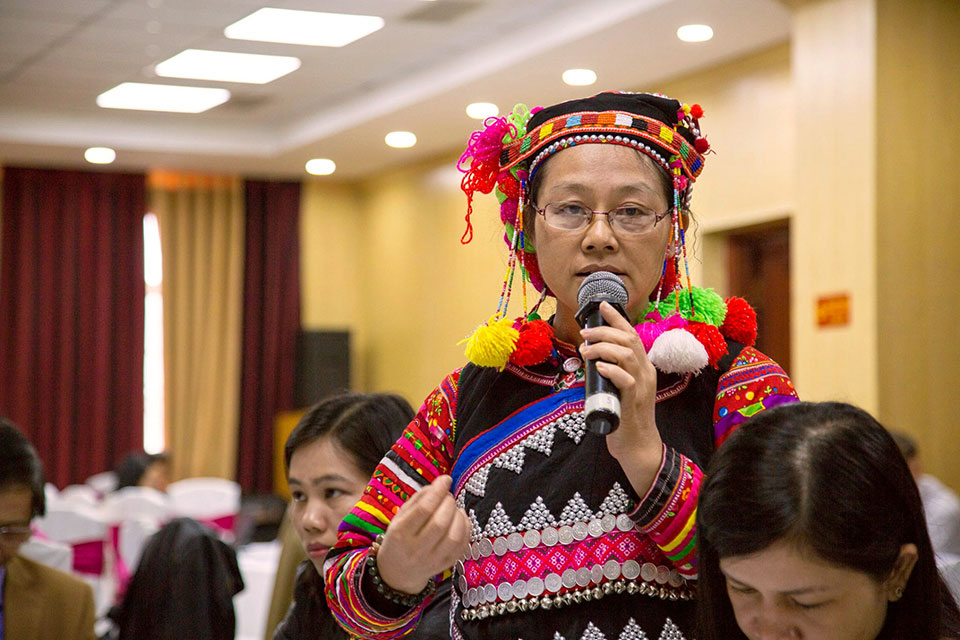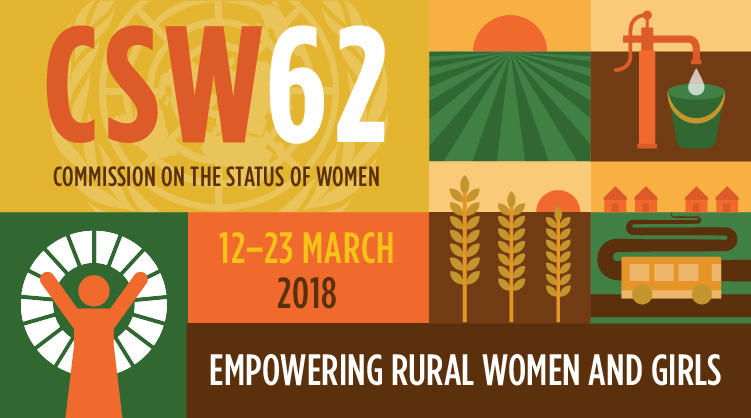Facts and figures: Governance and National Planning
Domestic public finance
Both the revenue and expenditure sides of national budgets can be structured in ways that reinforce – and at times exacerbate – gender inequalities.
- On average, low income countries collect more than four times as much revenue from value added taxes (VAT) as from personal income taxes. Middle-income countries are rapidly approaching the same level.VAT takes the largest share from those with the lowest incomes – where women are overrepresented in every country [1].
- Over 40 countries at all development levels implement flat-rate personal income taxes which have negative effects for low income populations. As women predominate in low income groups, these taxes often result in tax increases for poor women [2].
- At the national level, resources allocated to address gender equality are consistently low. For example, a review of spending in 24 countries from North, Central, South America and the Caribbean found allocations to eliminate violence against women are less than 1 per cent of the national budget [3]
- Effects of these types of fiscal policies can be seen across economic, political and social life. For example, in 2018 the global average gender gap in economic participation and opportunity was 41.9 per cent. Further, in 2018 based on data from 149 countries, only 58 per cent of this gap was closed which represented minimal progress and the lowest value measured by the Global Gender Gap Index since 2008 [4]
Integrating gender equality into governance systems, including planning and budgeting, contributes to progress towards national gender equality objectives.
- Since 2003, countries with gender budgeting have made more progress on the Gender Development Index, a measure of overall gender equality, than countries without gender budgeting [5]. For example, in India states with gender budgeting efforts have made more progress on gender equality in primary school enrolment than states without [6].
- A 26-country review from Asia-Pacific found that implementation of gender-responsive budgeting contributed to increased quantity and quality of budget allocations for gender equality [7]. In 2016 the Government of Timor-Leste increased gender-responsive budget allocations by 11 per cent in comparison to the previous year, even with a 29 per cent decrease in the overall budget. This has been attributed, in part, to improvements in tools to track, analyze and report on gender-responsive ministerial plans and budgets. [8].
- Achievement of national Sustainable Development Goal (SDG) targets requires funding directed to public services which are critical for women and girls. In South Africa, a gross annual investment of 3.2 per cent of GDP in early childhood education and care could lead to universal coverage for children aged 5 and under and create 2.3 million new jobs, which could in turn raise female employment by 10.1 percentage points [9].
- Although account ownership in developing countries has increased overall, inequalities remain. For example, 72 per cent of men have a bank account as compared to 65 per cent of women, a gap that has not changed since 2011 [10]. Closing these gap could improve women’s lives and have positive externalities. A study on financial inclusion in middle income countries found that closing the gender gaps in women’s access to financial services would result in an average 12 per cent higher income per capita by 2030 [11].
Sectoral investment
The data below demonstrate gaps in sectoral funding and the potential benefits of closing these for gender equality and women’s empowerment.
- A review of Global Environment Facility in Asia and the Pacific found that only 9 out of 92 projects (worth more than USD 6.7 billion) over the past 10 years allocated technical and financial resources for gender equality [12].
- Women constitute an average of 20 per cent of the agricultural labor force in Latin America and almost 50 per cent in East and Southeast Asia and sub-Saharan Africa. Despite this, they continue face global gender gaps in access to resources and productivity [13]. Closing the gender gap in agriculture could raise farm productivity by 20-30 per cent, increase national agricultural outputs by 2.5 to 4.0 per cent and, ultimately, lift 100 to 150 million people out of hunger, which would also increase women’s disposable income and contribute to increasing the tax base [14].
- Poor nutrition in pregnant women results in 800,000 newborn deaths annually [15]. Every dollar spent on scaling up nutrition interventions for pregnant women and children contributes to outcomes including prevention of 65 million cases of stunting in children and 265 million cases of anemia in women by 2025 [16].
- The percentage of gender parity at the upper secondary level of education remains low at only 29 per cent and 2 out of 3 illiterate adults are women. Increasing educational opportunities for girls and women could lead to a 10-20 per cent increase in future earnings with each additional year of schooling [17].
International public finance
- The total amount of Development Assistance Committee (DAC) members’ aid commitments in support of gender equality and women’s empowerment has increased significantly from USD 8 billion in 2002 to more than 41.7 billion in 2015-2016. However, aid targeting gender equality as a principal objective has been consistently low, decreasing from 5 percent in 2013-2014 [18] to 4 per cent in 2015-2016 [19].
- Gaps exist for aid directed to key sectors. In 2015-2016, only 2 per cent of aid with gender as a principal objective was allocated to water and sanitation. Further, in the economic and productive sectors dedicated gender equality programming represented only 1 per cent of total aid – a decrease from previous years [20].
- On average, USD 464 million of aid was directed to women’s institutions and organisations (governmental and non-governmental) in 2015-2016. Of this, USD 38 million – corresponding to only 8 per cent of the total – went directly to women’s organisations based in developing countries [21].
Notes
[1] UN Women (2018). Discussion paper: Gender, Taxation and Equality in Developing Countries.
[2] Ibid.
[3] OAS (2017). Third Hemispheric Report on the Implementation of the Belém do Pará Convention.
[4] WEF (2018). The Global Gender Report 2018.
[5] The Global Gender Report 2018. IMF (2018). IMF DataMapper, Gender Equality Indices. Available at: https://www.imf.org/external/datamapper/datasets/GD/2
[6] Stotsky and Zaman (2016). The Influence of Gender Budgeting in Indian States on Gender Inequality and Fiscal Spending.
[7] UN Women (2016). Gender-Responsive Budgeting in the Asia Pacific Region: A Status Report.
[8] UN Women (2016). Final Report “Institutional Strengthening of Gender Equality and Women’s Empowerment in Timor Leste” Project of UN Women 2013-2016
[9] UN Women. (2018). Turning Promises into Action.
[10] The World Bank. (2017). The Global Findex Database 2017.
[11] Global Markets Institute. “Giving credit where it is due. How closing the credit gap for women-owned SMEs can drive global growth”(2014).
[12] UN Women Regional Office for Asia and the Pacific (2016). Action not Words - Confronting Gender Inequality through Climate Change Action and Disaster Risk Reduction in Asia.
[13] Huyer S. (2016) Closing the Gender Gap in Agriculture.
[14] FAO (2018). Gender and ICTs. Mainstreaming gender in the use of information and communication technologies (ICTs)For agriculture and rural development.
[15] Unger H. et al. (2016). Undernutrition and malaria in pregnancy – a dangerous dyad?
[16] Shekar, M. et al. (2017) An Investment Framework for Nutrition: Reaching the Global Targets for Stunting, Anemia, Breastfeeding, and Wasting. Directions in Development. Washington, DC: World Bank.
[17] WomenDeliver. (2017) Ensure Equitable and Quality Education at All Levels.
[18] OECD (2018). Aid in Support of Gender Equality and Women’s Empowerment. Donor Charts.
[19] OECD (2017). Aid in Support of Gender Equality and Women’s Empowerment. Donor Charts
[20] OECD (2018). Aid to gender equality and women’s empowerment: An Overview.
[21] Ibid.
[Last updated January 2019]
Latest news
Using gender budgeting to empower ethnic minority women in Viet Nam

The experiences of ethnic minority households are shaping UN Women’s advocacy efforts in Viet Nam, to incorporate gender issues into development policies and programmes that benefit ethnic minorities.More
